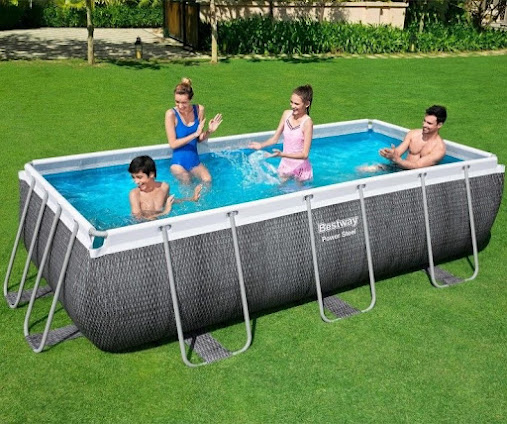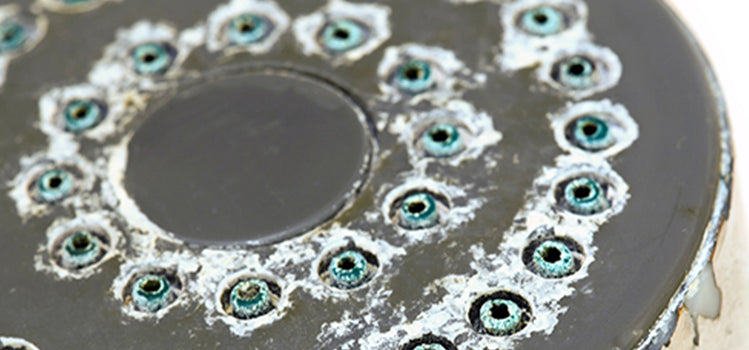One of the most common inquiries I receive from pool owners seeking guidance through my swimming pool consulting service revolves around the topic of eliminating chlorine or exploring alternatives to it. Many express a desire to reduce exposure to chemical toxins, with chlorine often topping the list of chemicals they wish to avoid. While chlorine allergies are rare, there's a prevalent misconception among pool owners about their sensitivity to it.
In reality, the challenge lies in maintaining a balanced and properly managed pool environment, despite the appearance of clear water. As an expert in spa and pool maintenance, I frequently encounter pools that are chemically imbalanced and inadequately controlled, even though their owners believe otherwise. It's crucial to address these misconceptions and provide accurate information to ensure optimal pool health and safety.
It's often tempting to attribute allergic reactions to chlorine in pool water, especially when the water appears clear and swimmers emerge seemingly unscathed. However, there's a diverse range of people with varying sensitivities to chemical balance in swimming pools.
Among the common culprits, pH levels play a pivotal role, with some individuals exhibiting extreme sensitivity to deviations from their ideal pH range. Additionally, elevated levels of combined chlorine indicate the need for breakpoint chlorination, a process essential for maintaining water quality.
Both imbalanced pH and excessive chlorine levels are frequent triggers for allergic reactions mistakenly attributed to chlorine. In residential pool settings, these issues are as prevalent as they come, underscoring the importance of diligent pool maintenance.
When it comes to allergic reactions in pool water, it's essential to follow the principle of "when you hear hooves, think of horses, not zebras." In other words, focus on the most common triggers before assuming it's chlorine. For those prone to reacting to pool water, identifying the two typical culprits of reactions is crucial.
Instead of immediately attributing symptoms to chlorine, consider other factors that could be at play. Remember, chlorine serves as the primary defense against potential hazards in pool water. By staying vigilant and identifying common triggers, you can effectively manage and mitigate allergic reactions in pool settings.
How can I use fewer chemicals in your pool - IDiscovering ways to reduce chemical usage in your pool is surprisingly straightforward, yet often overlooked by pool owners. Instead of constantly seeking chemical alternatives to chlorine, consider maximizing the efficiency of your existing system.
Many pool owners fail to realize that they can enhance water quality by optimizing their filtration system. Typically, pool water is filtered once a day, but this may not be sufficient for thorough cleaning. By increasing the frequency of filtration, you can significantly reduce the need for chemical treatments.
It's time to rethink your approach and leverage your pool's existing infrastructure to achieve cleaner, healthier water with fewer chemicals. This is a 1500-gallon filtering system for a pool that is about 1500 Gallons per day. There are pools that do more than others, and some have less, but it's approximately the norm and is likely to result in the pool being clean. You’re leaving plenty of opportunities for improvement since you're just not filtering the entire water in your pool daily.
Taking a rational approach to pool maintenance unveils a simple yet crucial truth: effective filtration is key to cleaner water. Consider this scenario: if you own a 20,000-gallon pool and your filtration system can only process 20,000 gallons per day, it's inevitable that a portion of the pool water remains unfiltered.
To achieve optimal cleanliness, each volume of water should be filtered multiple times. The first turnover filters approximately 63% of the pool water, while the second turnover increases this to 86%. With each subsequent turnover, the percentage of filtered water rises, reaching 95% after the third turnover and 98% after the fourth.
By understanding the importance of multiple volume turnovers, you can ensure that your pool water is thoroughly filtered, reducing the reliance on chemical treatments. It's clear that relying solely on one daily turnover for filtration can lead to the accumulation of organic matter and waste in your pool water. Any debris left unfiltered must be addressed chemically, potentially increasing the need for chlorine treatment.
By emphasizing mechanical filtration to remove debris, you can minimize the reliance on chemical treatments, ensuring cleaner and safer pool water for swimmers. This approach not only reduces the need for excessive chlorine but also promotes a more sustainable and eco-friendly pool maintenance routine.
The cost of 24-hour water filtration - The expense of continuous 24-hour water filtration - It's widely recognized that maintaining filtration for swimming pools can be costly, primarily due to the significant energy consumption of pool pumps. In fact, these pumps can consume up to half of the energy used in households every month, which is quite staggering. If you're curious about the power consumption of pool pumps, you can delve into this article for more insights.
With the increasing adoption of variable speed pumps over single speed pumps, it's no longer practical to limit water filtration to just a few minutes during the day. Opting for 24-hour filtration ensures you get the most bang for your buck in the long run. You can divide the total 24-hour filtration time into low, medium, and high-speed settings throughout the day, without needing to shut off the pump entirely. This approach not only maximizes efficiency but also ensures consistent water circulation and cleanliness, contributing to a healthier and more enjoyable swimming experience.
Extending filtration hours with low-speed settings can result in significant savings, especially with variable speed pumps. If your priority is to minimize chemical exposure in your pool, adopting a 24-hour filtration schedule is key, albeit with a slight increase in power consumption to enable more effective water filtration.
Achieving cost-effective water filtration is undoubtedly a primary goal, but prioritizing reduced chemical exposure requires a different approach. Investing a bit more in an efficient variable speed pump that runs all day can offer extensive filtration benefits at minimal costs. Why settle for minimal filtration when you can enjoy optimal cleanliness and safety with continuous filtration powered by an energy-efficient pump?
Filtering your pool water should no longer be seen as a sacrifice but as a necessity for achieving the desired results: fewer chemicals and safer water quality without compromising on cleanliness. It's a straightforward choice, especially when considering the health benefits it offers.
For those aiming to reduce chemical exposure, upgrading your filtration system to run at least three times per day is crucial. However, if you're striving for the lowest chemical levels possible, aim for five to ten turnovers per day using your filtration system.
Investing in increased filtration frequency outweighs the cost of electricity, especially when utilizing a smart and dynamic 24-hour filtering schedule with variable speed options. If minimizing chemical exposure is your goal, embracing rigorous filtration practices is essential for maintaining a safe and pristine swimming environment.
Consider upgrading your pool filter to a more efficient option such as cartridge filters, known for their superior debris removal and optimal flow rates. Unlike sand filters, which can impede flow due to their multiport valves, cartridge filters offer enhanced performance and smoother water circulation.
By implementing these strategies, you have the potential to significantly reduce chemical exposure in your pool. Increasing filtration frequency not only improves water quality but also minimizes the need for chemical intervention. It's a simple yet effective solution to maintaining a cleaner and safer swimming environment.
In the realm of pool and spa maintenance, finding straightforward solutions is rare, making these filtration upgrades even more valuable. Seize the opportunity to enhance your filtration system today and enjoy reduced chlorine exposure and improved water quality tomorrow.
In addition to reducing chlorine usage in your pool, maintaining cleanliness in your bathroom is crucial for a pleasant bathing experience. If you're dealing with limescale buildup on your shower head, you can learn effective cleaning techniques in our blog post on How to Clean Your Shower Head of Limescale. This informative guide offers practical tips to keep your shower head sparkling clean without the need for harsh chemicals. Check it out to enhance your bathroom maintenance routine.


No comments:
Post a Comment